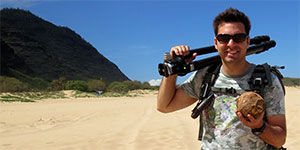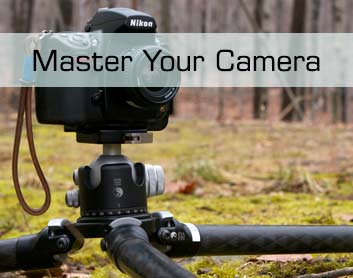-
Copyrights
Thomas M Thurston LLC (hereinafter referred to as the “Seller”) exclusively retains all copyrights in the Artwork. Purchaser shall not copy, reproduce, reprint, or alter the Artwork, or create a derivative artwork. Purchaser shall not allow, enable or permit a third-party to copy, reproduce, reprint, or alter the Artwork, or create a derivative artwork. As used herein, the term “Artwork” includes, without limitation, the printed photograph, framing and matting. In addition to Seller’s other remedies for violation of its copyrights, violation of this provision shall void all of Seller’s warranties with respect to the Artwork.
-
Resale
Any resale of the Artwork by the Purchaser or by Purchaser’s successors in interest shall be subject to Seller’s exclusive copyrights in the Artwork and to the restrictions set forth in Condition 1 above. Upon resale of the Artwork, Purchaser and its successors shall promptly notify Seller of the identity and contact details of the Repurchaser. A resale of the Artwork will not transfer the Seller’s warranties with respect to the Artwork to the Repurchaser.
-
Payment
Purchaser will make full payment of the Purchase Price for the Artwork, in the amount and form specified by Seller, at the time Seller accepts the order.
-
Shipping
For shipments to one of the States of the United States, the cost of shipping the Artwork to the Purchaser’s address and shipping insurance to cover loss and/or damage during shipping will be covered by Seller at no additional cost to Purchaser. For shipments outside the United States, Purchaser will be charged a competitive rate for shipping and insurance in addition to the Purchase Price. The Purchaser will be a named insured on the shipping insurance and will be solely responsible for pursuing any claim for loss and/or damage with the shipper and/or the shipping insurer. Subject to the foregoing, Purchaser shall bear the risk of loss or damage to the Artwork during shipping.
-
Delivery
Because the Artwork is made-to-order by the Seller, delivery of the Artwork to Purchaser will be approximately five to seven weeks after Seller has accepted Purchaser’s order. Seller will notify Purchaser by email when the Artwork in ready for delivery, and the Shipper will contact Purchaser to schedule a delivery date and time. Purchaser must be present to accept delivery and sign for receipt of the Artwork.
-
Print Quality
Purchaser acknowledges that digital representations of the Artwork on Seller’s website may differ in colors and tones from the printed Artwork, due to inherent limitations in color calibration and digital display. Seller assumes no responsibility for such variations in colors and/or tones of the printed Artwork.
-
Warranty
a. 30-Day Money Back Guarantee
Artwork is covered under a 30-Day Money Back Guarantee and is limited to store credit, exchange, or refund of the Purchase Price. 30-Day Guarantee commences on the day of delivery. Artwork must be returned to Seller in like-new condition. Limited Edition Artwork is excluded from this Guarantee. Purchaser is responsible for return Shipping Costs and Insurance for the Artwork’s full value.
b. Limited Lifetime Fade-Free Warranty
Artwork is covered under a Limited Lifetime Fade Free Warranty. Warranty (b) is voided if Artwork is altered, manipulated, reframed, re-matted, and/or tampered with by Purchaser or a third-party. Warranty (b) is voided if Artwork is displayed in a location not within the guidelines as defined in the Setup and Care Guide – Environment Considerations Subsection. Warranty (b) is voided if cleaning recommendations are not followed according to Setup and Care Guide – Care & Maintenance Section. Purchaser is responsible for all associated Shipping Costs and Insurance for the Artwork’s full value to and from the Seller.
c. Limited Lifetime Framing Warranty
Artwork is covered under a Limited Lifetime Framing Warranty. Warranty (c) is voided if Artwork is altered, manipulated, reframed, re-matted, and/or tampered with by Purchaser or a third-party. Warranty (c) is voided if Artwork is not hung within guidelines as defined in Setup and Care Guide – Hanging Your Artwork Section. Warranty (c) is voided if cleaning recommendations are not followed according to Setup and Care Guide – Care & Maintenance Section. Warranty does not cover unique variations in hand-made framing materials, including but not limited to coloring, grain, distressed materials, and/or wood knots. Purchaser is responsible for all associated Shipping Costs and Insurance for the Artwork’s full value to and from the Seller.
Limited Lifetime for Warranties (b), (c) is defined as the life of the original Purchaser. A maximum of 1 claim for Warranty (b) may be honored while within the Warranty period. A maximum of 1 claim for Warranty (c) may be honored while within the Warranty period. Warranty Work requests pertaining to aforementioned (a), (b), (c) clauses must be initiated by Purchaser and authorized by Seller in writing prior to initiating any return. Warranties hereunder are not transferable upon sale, gift or conveyance of the Artwork to a third-party.
-
Disclaimer
THE WARRANTY PROVIDED IN CONDITION 7 IS IN LIEU OF ALL OTHER WARRANTIES, EXPRESS OR IMPLIED, INCLUDING WITHOUT LIMITATION, WARRANTIES OF MERCHANTABILITY AND FITNESS FOR A PARTICULAR PURPOSE.
-
Limitation of Liability
SELLER’S LIABILITY TO PURCHASER SHALL BE LIMITED BY THE WARRANTY PROVIDED IN CONDITION 7. IN NO EVENT SHALL SELLER BE LIABLE FOR INCIDENTAL OR CONSEQUENTIAL DAMAGES INCURRED BY PURCHASER.
-
Remedies
Any dispute or claim by either Seller or Purchaser shall be resolved exclusively by binding arbitration pursuant to the rules of the American Arbitration Association and conducted in Morris County, New Jersey.













